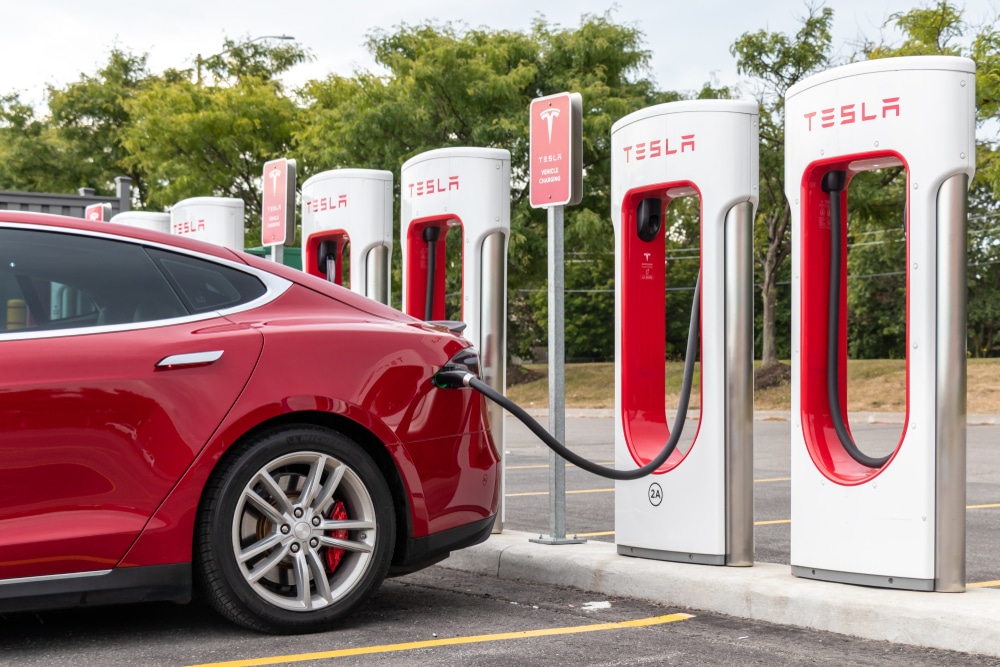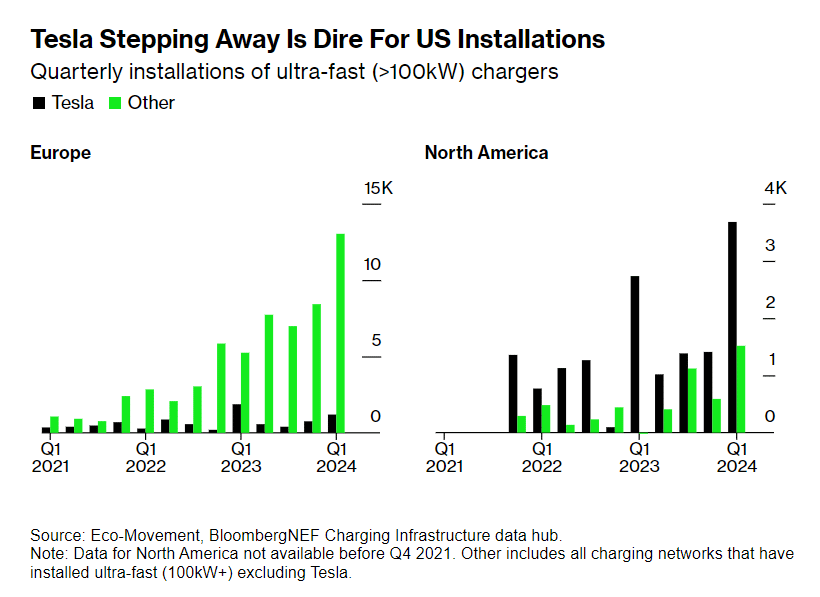BP’s electric vehicle (EV) charging arm is seizing the opportunity presented by Tesla’s scaling back of its Supercharger team, pledging to invest US$1 billion to expand its network across the US.
With plans to install over 3,000 charging points, including large-scale hubs termed Gigahubs, BP aims to address the growing demand for EV charging infrastructure.
BP’s Billion-Dollar Investment in EV Charging
Sujay Sharma, CEO of bp pulse Americas, emphasizes the company’s readiness to acquire real estate and talent, inviting stranded partners to reach out for collaboration opportunities. Tesla’s recent downsizing of its Supercharger team has created an opening for competitors to bolster their presence in the market. The company said that it:
“is aggressively looking to acquire real estate to scale our network, which is a heightened focus following the recent Tesla announcement.”
Last year, the company entered into an agreement to procure around $100 million worth of Tesla Supercharger hardware, with deployment set to commence later this year and in early 2025.
BP has downsized its electric vehicle charging business by more than 10% and exited several markets due to unsuccessful growth expectations in commercial EV fleets. The 250-kilowatt chargers under the BP Pulse brand will be adaptable to both Tesla’s North American Charging Standard (NACS) and Combined Charging System (CCS) connectors, facilitating the charging of EVs from various manufacturers.
As automakers increasingly adopt Tesla’s NACS, it poses a challenge to the rival CCS, potentially positioning Tesla’s superchargers as the industry standard.
BP pulse is a crucial part of bp’s strategy to become a net zero company by 2050 or sooner.
Filling the Gap Left by Tesla’s Downsizing
Elon Musk recently made the decision to reduce Tesla’s Supercharger team, signaling a slower pace of growth for the EV charging network. This move raises concerns about the progress of charging infrastructure and EV adoption in North America.
BloombergNEF estimates that the region will require 400,000 ultra-fast chargers by 2030 to accommodate 40 million EVs. Presently, Tesla holds a significant share, accounting for 74% of all high-speed chargers in North America.
Two years ago, Musk said that Tesla aimed for a 10% profit margin from its network. Recently, BNEF estimated that the company could potentially reach $740 million in annual earnings from charging by 2030, representing around 8% of the company’s overall profit last year.
Despite Tesla’s dominance in the high-speed charging sector, competitors like BP see an opportunity to fill the gap and gain market share. BP’s proactive approach includes procuring Tesla supercharger hardware and seeking to onboard former Tesla employees to support its expansion plans.
Other companies, such as EVgo, also view Tesla’s slowdown as a chance to increase their market footprint. CEO Badar Khan sees this shift in the competitive landscape as favorable for companies like EVgo to step up and fulfill the growing demand for EV charging infrastructure.
Bp’s move aligns with the broader industry plan of the Biden administration.
Accelerating EV Infrastructure in the US
The United States government is allocating an impressive $623 million to accelerate the expansion of EVs as part of its efforts to transform the transportation sector. These grants, made available through the 2021 Bipartisan Infrastructure Law, are intended to facilitate the widespread adoption of EVs across the country.
Despite there being over 4 million electric vehicles currently on American roads, progress in developing the EV charging infrastructure has been sluggish. Only New York and Ohio have operational charging stations, with Pennsylvania and Maine expected to launch their own stations this year.
Globally, around 11 million EV units were sold last year, and the EV market is projected to reach a remarkable $623 billion in sales in 2024, encompassing both battery electric vehicles and plug-in hybrids. This growth trajectory is expected to continue, with the market volume reaching $906 billion by 2028, accommodating 17 million vehicle units.
The grant aims to enhance the accessibility, reliability, and convenience of EV chargers for American drivers, while also fostering job creation in charger manufacturing, installation, and maintenance sectors.
With Tesla’s Supercharger downsizing creating an opening in the market, BP is stepping up its EV charging expansion efforts in the US, backed by a substantial investment. The move aims to address the growing demand for EV charging infrastructure. And it also aligns with broader government initiatives to accelerate EV adoption and infrastructure development.



